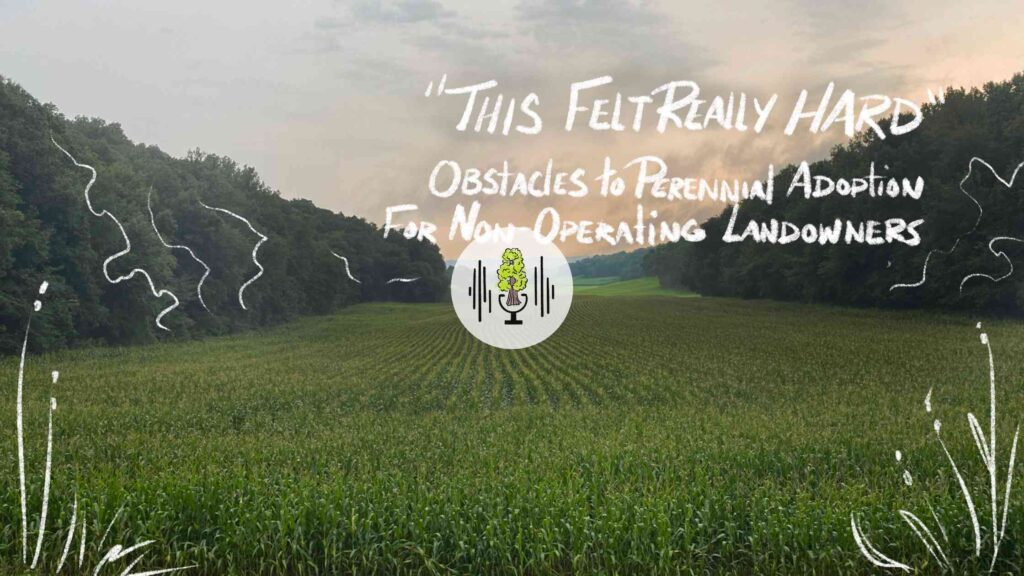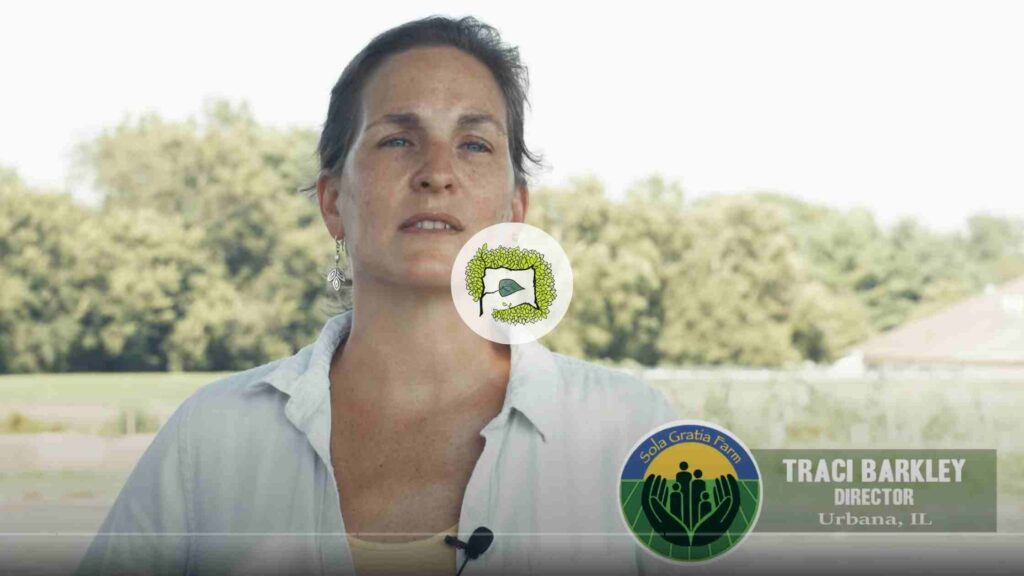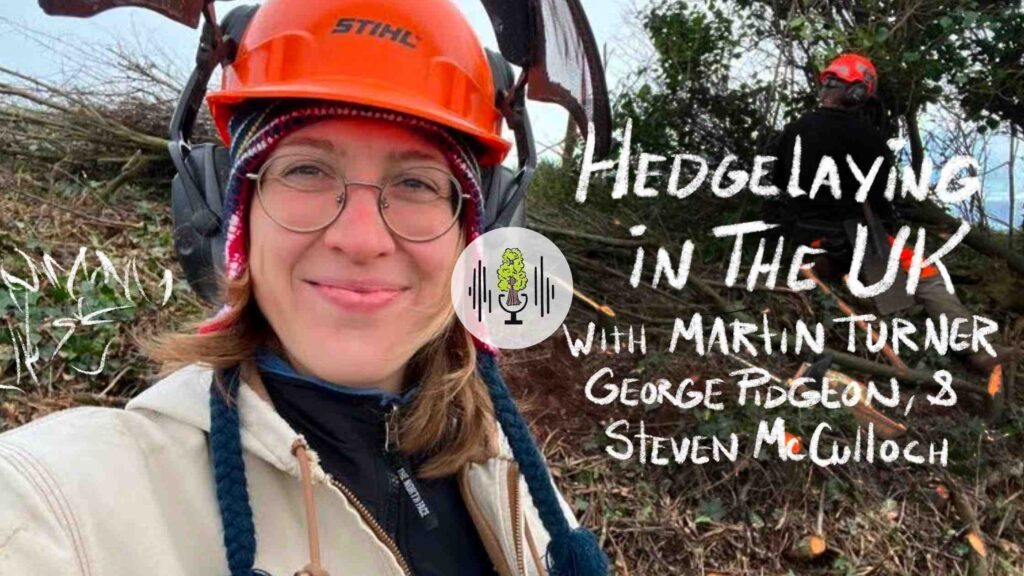Spring Green Campus Tour with Farm Director Erik Hagan
If you’ve had a chance to visit our demonstration farms in Spring Green, Wisconsin, you know that they are special places. And if you haven’t, our latest podcast episode can give you a glimpse.
We host monthly farm tours at our Spring Green Campus, and the latest podcast episode features a recording of one of these tours, led by Farm Director Erik Hagan. You’ll hear about hazelnuts, chestnuts, silvopasture with sheep, and lots more projects that are just getting started at the Spring Green Campus.
If you’d like to see all this for yourself, don’t miss this year’s Open House at the Spring Green Campus on October 5th, which will be followed by the Perennial Farm Gathering in Madison, Wisconsin, happening in-person for the first time in five years. You can find details and registration information on our website here.
Transcript has been edited for brevity and clarity.
Erik Hagan: We’re only going into our third season. We don’t have all the answers in the world. But we’re trying to do a better job of documenting every activity. How long does it take to cultivate these elderberries? How effective are the organic sprays? You know, trying all these different systems and actually documenting how long it takes, how costly it was and how it would compare to another system. And then actually being able to put that information out so people can clearly see it. We’re not here to say this is the only way it should be. What we’re here to do is say, hey, trees and shrubs have a place, and there’s a million and one ways to do it on this farm. What you’ll see today is actually what we call a tree crop production farm. So you’re gonna see trees that are actually planted to harvest the nut or the fruit crop off of it, so it’s basically like a high tech orchard system or a really complex orchard system, because we’re still farming in the understory or grazing the understory. But there’s other ways of doing this.
This is part of the Spring Green Campus. This is North Farm. It’s one of four farms that make up the campus. This farm is 331 acres. Valley Farm is the one I keep talking about down the road – it’s 183 acres – that’s our breeding and research farm. And then we have two farms south of the river, which are demonstration farms as well. We haven’t done a whole lot of planting there yet. Like I said, we’re just going into our third year. So we’re focusing here and at Valley Farm and then next year really starting to focus our efforts on the other side of the river. This farm, as you’ll see, like I said, 331 acres, we have 100 acres of cropland. The rest is forested. Or some sort of, like, prairie or remnant prairie or, oak savanna landscape that we’re looking at restoring. We’re also in the MFL program, the managed forest law. So we are actively managing our forest for timber, timber and conservation efforts, which is pretty cool. We just started reworking our managed forest law plan, which is super exciting to me because we’re looking at forest farming practices like, farming ginseng and ramps and ostrich fern and all these other cool things and looking at conserving a lot of the understory ephemerals that are native to here. Because this farm actually has does have a pretty amazing population of those. While also managing for a timber crop and thinking about the ecology and how that affects bird populations and that sort of thing.
Any other questions so far? I warned you I could just talk…
This is our grazing system that we’re working with right now. Like I was saying earlier, there’s kind of two pathways into agroforestry, right? There’s the tree cropping side, which is high intensity orchard management, and then on the complete opposite side is more like adding trees to support an existing farming system. In that case you’ll usually have a lot less trees in the ground, a lot lower density of trees. And then there’s everything in between. And as I mentioned, this farm is more of a tree crop farm. So in this scenario – this what we call silvopasture by addition – with this planting here we’re actually growing a chestnut crop, and we’re trying to figure out how to graze a chestnut orchard with livestock, because we’re trying to make some revenue before the chestnuts mature. We’ve got to pay for every acre of land through farming. So in this case, the livestock are supporting the tree system. That’s one side of silvopasture by addition. The other side would be trees supporting the livestock system. If you are a livestock grazer and you have a lot of cattle or a pretty big system that’s established and that’s your focus, I would recommend spacing your trees much farther apart than this. This is very much an orchard spacing. We’re trying to figure out how to graze this as an orchard. Which is a very different approach than managing for livestock production.
Listen to Recent Episodes

“This Felt Really Hard” – Obstacles to Perennial Adoption for Non-Operating Landowners
Host Jacob Grace talks with his friend Alex about her family’s experiences as non-operating landowners trying to establish perennial management on their historic Wisconsin farm, and the hurdles and roadblocks they have encountered along the way.

Agroforestry for Community Food Security
Sola Gratia in Urbana, Illinois grows food for a community where one in 10 people and one in eight kids don’t know where their next meal is coming from.

Hedgelaying in the UK with Martin Turner, George Pidgeon, and Steven McCulloch
This January, Savanna Institute staff member MJ Oviatt visited the UK to study hedgelaying with members of the Blackdown Hills Hedge Association. In this episode, we hear MJ’s recorded conversations with hedgelayers Martin Turner, George Pidgeon, and Steven McCulloch.

